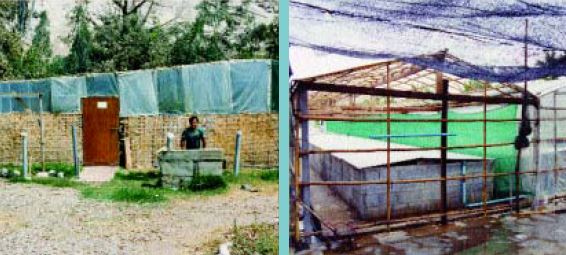4 Hatchery phase
ALL FRESHWATER PRAWN HATCHERIES are unique. No precise prototype hatchery would suit every local situation. This manual therefore does not attempt to provide a complete design but it does describe the various features and techniques used in them. This section of the manual is derived not only from the original manual but also draws heavily on recent reviews (Correia, Suwannatous and New 2000; Valenti and Daniels 2000). Two basic types of hatchery are described.
The first type is known as the flow-through system, which is effectively used in many parts of the world and evolved from the original facilities developed by Takuji Fujimura and his team at the Anuenue Fisheries Research Centre in Hawaii in the 1960s and 1970s.
The variants of the flow-through system that exist (e.g. high-density culture, ‘greenwater’ versus ‘clearwater’ management, coastal versus inland hatcheries) are discussed later in this section.
Recirculation systems involving the use of biological filtration have been developed to conserve water and energy usage, reduce the demand for seawater or brine, and facilitate the establishment of inland hatcheries. They range from simple systems utilizable by small hatcheries to sophisticated systems used for research work and commercial hatcheries.
The second type of hatchery described in this section uses a specific form of water recirculation and is known as the dynamic closed system6. In the rest of this section of the manual this will be referred to simply as the recirculation system. This is based on continuous circulation of the larval water through physical and biological filters to remove solid and nitrogenous wastes. This system can have individual biofilters for each larval tank or a common biofilter serving several larval tanks. The latter is naturally more risky because a failure in the system may affect a large number of larvae. However, the risk has to be balanced against the capital and maintenance costs of multiple filtration systems.
6 The alternative recirculation design is known as the static-closed system and is basically similar to the flow-through system except that the water removed from the system during water exchange is transferred to a separate physical and biological filtering unit for treatment, which also involves chlorination and chemical dechlorination, before being returned to the larval rearing tanks. This tends to increase larval stress and mortality and is not recommended in this manual.
Figure 14a
Small hatcheries can be very simply constructed (Peru)
Figure 14b
Interior of a simply-constructed inland hatchery for freshwater prawns (Thailand)

SOURCE: OSCAR ORBEGOSO MONTALVA SOURCE: HASSANAI KONGKEO
The general details (facilities and management) for flow-through and recirculation systems are similar. Where there are special requirements for recirculation systems, these are described under each sub-heading of the section.